A Homeowner's Guide To Water Filtration
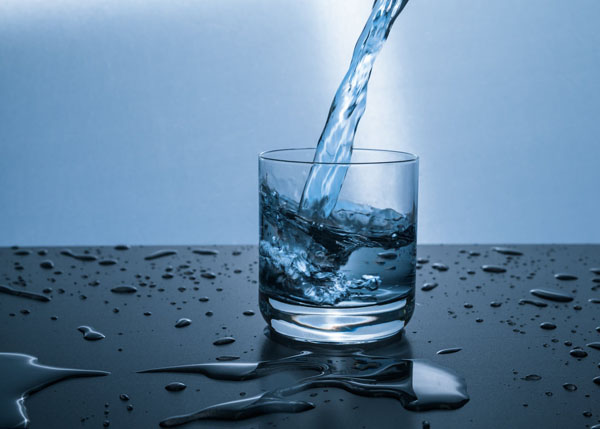
Is a home water treatment system a luxury or a necessity? Based on surveys commissioned by the Water Quality Association (an industry trade group), people who viewed water treatment as a luxury rose from 50 to 54 percent between 2013 and 2015.
These nearly evenly split results indicate confusion and misinformation about home water treatment. When is home water treatment truly needed? Why is water filtration the environmentally friendly approach to obtaining clean, healthy drinking water? Finally, what options do homeowners have when selecting a home water treatment system?
Why Would I Need a Water Filtration System?
As water flows in lakes, rivers, streams and underground wells, it picks up a little bit of everything it touches. Some of it is good, some of it is bad and some of it is just unpleasant. A home water filtration system is sometimes the only way to counteract water's ability to act as a solvent. A filtration system can provide many benefits:
1. A filtration system removes harmful contaminants.
In enforcing the provisions of the Clean Water Act and Safe Drinking Water Act, the Environmental Protection Agency (EPA) requires that water utilities limit the amount of 90 different contaminants that can lead to increased health risks. The list includes well-known dangers like arsenic and lead, but it also includes bacteria and organic and inorganic compounds that are less well known but nonetheless dangerous.
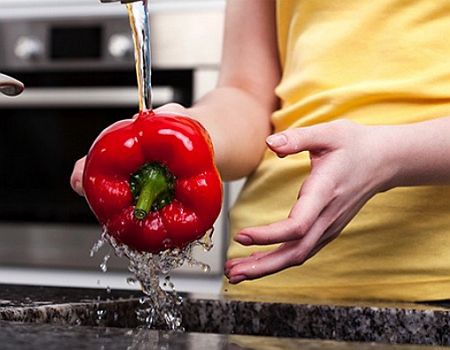
It is up to the company that supplies your drinking water to remove these contaminants or at least get them down to what are considered safe levels. The majority do a good job, but sometimes a certain contaminant may spike and get through. There are also situations where some individuals may have a sensitivity to a contaminant at the EPA-approved level. In other words, the level that is considered safe for the general population may not be safe for certain people.
In addition, once water leaves the water treatment facility, it must flow through pipes that could leach harmful contaminants, such as lead. A water filtration system acts as a second safeguard once the water reaches your home.
2. A filtration system removes the material that sometimes makes drinking tap water unpleasant.
In addition to harmful contaminants that may be in water, the EPA has developed a list of "Secondary Standards." These are contaminants that will not make you sick, but they affect the look, taste and smell of water. These contaminants can give water a chlorine or rotten egg smell or turn it cloudy or off-color. Some, while not harmful to humans, are corrosive and can damage pipes and appliances. Your water utility is not required to test for these contaminants.
3. Home filtration is more environmentally friendly and cheaper than relying on bottled water.
Plastic water bottles are petroleum-based products that rely on fossil fuels during the manufacturing and transportation process. Disposing of the bottles in landfills also takes a toll on the environment - only about 37 percent of bottled water containers are recycled, according to the International Bottled Water Association. Not to mention, bottled water is 2,000 times more expensive than tap water, and not all bottled water comes from a protected spring. (About 45 percent of bottled water is just purified tap water.)
How Do I Find Out What's in My Water?
If you have traveled around the country, you've probably noticed that tap water in other places can taste different than water at home. The contaminants and materials water comes in contact with can affect the way it tastes, and the contaminants in your water can depend on where you live and where you get your water supply. If you are considering a water filtration system, it is best to find out what is in your water and what you want to filter out.
Refer to the water quality report. Begin by consulting the "Consumer Confidence Report" (CCR) issued by your water utility. The report is sometimes called the "Water Quality Report." Part of the Clean Water Act requires municipal water facilities to test the water they supply to the public. The utility must then mail a copy of the report to its customers once a year, and it is a requirement for any water company that serves more than 25 people or 15 households.
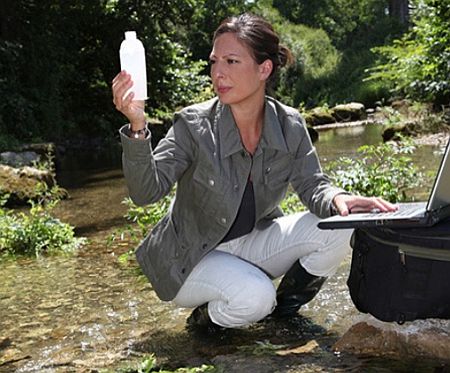
The report is tailored to each water company, but they all contain:
- An explanation of where the company obtains its water.
- Information on the level of contaminants in the water.
- What the EPA considers to be safe levels of contaminants.
- Other relevant information about your water system.
If the CCR is one of those pieces of mail you transfer to the "circular file" as soon as you receive it, or if you live in an apartment building that is owned by someone else, you can get a copy from your water supplier. A list of contacts for municipal water suppliers can be found on the EPA's website.
Hire a company to test your water. If you get your water from a private well, you can have your water tested by a company that is certified to test water. Mortgage companies may require well testing when you buy a house, and if you build your own home, building officials may require a clean bill of health for the well before issuing a Certificate of Occupancy. Other than that, most regulations on well testing are fairly lax. The EPA recommends annual testing.
"It is a good idea to have well water tested every couple of years," says Joe Truini, a home improvement expert and writer. "The tests should check for bacteria but also identify the mineral and metal content of the water. The tests are also a good way to stay up-to-date with state regulations. For example, a test from 2012 showed the sodium level in my well to be borderline high, but a 2015 test showed the sodium level to be way below state limits, even though the actual sodium content had not changed that much. What had changed was the regulation. That's important, because I was considering buying a filter to remove what I thought were high levels of sodium. Now I don't need to."
At a minimum, the EPA recommends annual tests for the following:
- Nitrates -- These can interfere with red blood cell's ability to transport oxygen.
- Coliform bacteria -- These are pathogens caused by fecal contamination.
- Total dissolved solids -- High levels of minerals, salts, metals, cations or anions can make water unfit for consumption.
- pH levels -- Imbalance can cause a variety of health issues like cardiovascular disease and bone fragility.
Test the water more frequently if a test turns up a problem or if you suspect the well has been contaminated for some reason. "We had our well tested because there was local concern about crop dusting contaminating the ground water," points out home improvement expert Steve Willson.
What Kind of Systems Are Available?
If you've had your water tested or you have reviewed the CCR and you are concerned about the results, you have a few options. You can treat only the water you drink, or you can treat all the water that enters your house.
Point-of-Use (POU) Systems
These systems treat the water where it is used, usually in the kitchen. They include countertop products that treat the water one pitcher-full at a time, filters that attach directly to the faucet and under-sink units that hook into the cold-water line. Some units have a dedicated faucet that is installed in the sink deck.
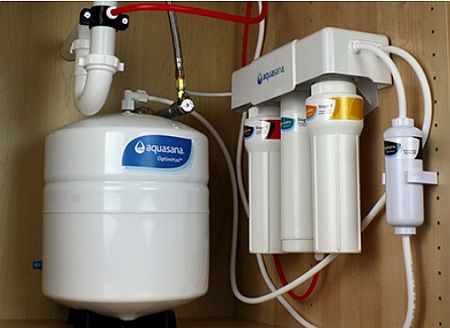
POU systems rely on multiple different water treatment technologies to rid the water of contaminants. They include:
Carbon Filters. Activated carbon filters are used in many filtering systems, including pitcher filters, countertop and under-sink products. Carbon does a good job of filtering out the byproducts of the water treatment process that can affect the taste of water. Some filters can remove harmful contaminants like lead and pesticides, but not all filters perform the same. In general, solid block carbon filters remove more contaminants than granular activated charcoal. Some under-sink systems use two or more filters in a series to increase the number of contaminants the system can remove. These systems often contain another filtering medium in addition to the carbon.
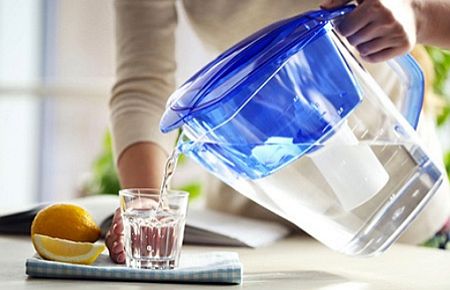
Reverse Osmosis (RO). These systems force water through a semi-permeable membrane that filters out a variety of contaminants, including certain metals and nitrates. RO systems usually consist of the membrane as well as carbon pre-filters to remove sediment and some contaminants, and they also contain post-filters that finish the job and remove the chlorine taste from water. These systems are effective, but the whole process takes some time, so RO systems usually include a storage tank so that clean water is ready when it is needed.
Distillers. These systems heat water until it turns into a vapor and then condenses the vapor back into a liquid. Distillation can remove many contaminants, but they produce very little clean water in a day. They are often used in combination with carbon filters.
Ultraviolet Light. Although not as popular as carbon filters and RO systems, under-sink units that use ultraviolet light to kill bacteria, viruses and other microorganisms are available. Most cannot remove gases, heavy metals or particulates. Systems may work in conjunction with carbon filters.
Point-of-Entry (POE) Systems
These systems treat all the water that flows into your house. They are usually installed where the water line enters the house or near the pressurized tank if you draw water from a private well. They rely on the same filtering technologies as POU systems, and as with POU systems, different technologies are often combined in the same setup—ultraviolet light combined with carbon filters, for example.

Many POE systems include a water softener, which is a good choice if you live in an area with hard water. For more on water softeners see the, "Do I Need a Water Softener?" sidebar.
How Do I Choose the Right System?
There are several options when it comes time to select a filtration system. After identifying the contaminants you want to eliminate from your water, you probably have an idea of whether you want a POU system or a POE system. Here are some points to consider when making a purchasing decision.
System Effectiveness. The system should extract the contaminants you want removed. The manufacturer's literature may make statements like, "Removes 99 percent of lead," or, "Removes 100 percent of bacteria," but the average shopper has no way to verify such claims. Fortunately, NSF International, an independent testing and certification company, and the Water Quality Association certify water treatment products. You can visit the Water Quality Association at wqa.org to search for certified products. At the NSF site, you can match a water treatment technology with specific contaminants to find certified products. For example, if you want a reverse osmosis system that removes lead, you can find a list of companies and products here.
Flow Rates. Water treatment systems take time to clean the water. Each product will list its flow rate in gallons per minute (GPM). For POU systems, such as one installed in the kitchen cabinet, you will find rates that range from about .5 GPM to 1.5 GPM and higher. Because reverse osmosis systems use storage tanks, they are rated in the number of gallons they produce in a day. The flow rate is more important when deciding on a POE system. These systems must be able to handle enough water to provide drinking water, as well as wash clothes, supply showers and tubs, and flush toilets. They typically supply water at the rate of 15 to 40 GPM. Discuss your needs with an installer or a dealer to find the size that is best for your household's needs.
Ease of Maintenance. Water treatment systems require some maintenance, so examine the manufacturer's literature to see what needs to be done and how often. Some POU carbon filters can last about six months before they need to be changed. Larger POE systems may only require annual replacement.
Accessories. The dedicated faucet on POU systems should fit in with the rest of the kitchen design. Companies offer the faucets in a variety of styles and finishes. An indicator light that lets you know when to change the filters is also a useful option.
Costs. What you will pay depends on several factors. Here are some ranges for different types of systems
- Countertop pitcher: About $30
- Filter attached to a faucet: $20–$50
- Under-sink systems: $100–$600 (uninstalled)
- Whole-house systems: $400–$2,500 (uninstalled)
What Should I Know about Installation and Maintenance?
A reasonably handy homeowner can install most POU systems. For under-sink systems, however, the space is very cramped. The systems contain everything you will need to complete the installation, and there is no soldering as the systems use compression fittings. Basically, you will turn off the cold-water supply at the sink.
Disconnect the supply line that runs from the shutoff valve to the faucet, and install a fitting that diverts water to the filtration system. From there, connect tubing that runs to the inlet side of the filtration system and then tubing that runs from the outlet side to the dedicated faucet.
Place the faucet in the sink deck.
The filter or group of filters usually attaches to the inside wall of the cabinet. For a reverse osmosis system, the outlet tubing runs to a storage tank. There is also a drain line that removes impurities captured by the reverse osmosis membrane. The line connects to your sink drain.
POE systems involve cutting into the main water line that enters the home. These installations are best left to a professional plumber.
The fine points of maintenance will vary from product to product, so it is important to consult the product literature. All filters will eventually need to be changed. Manufacturers have made this process easier. Some filters on POU systems release from their holder with a push of a button, while some require a special tool to release and install the filter. Some filters last about six months, but the larger filters on POE units can last a year. Reverse osmosis membranes need to be replaced every few years. You can keep track of maintenance chores by writing the date you replaced the filter right on the filter in indelible marker. Filter life will depend on the condition of the water in your home.
Conclusion
Armed with the information in this guide, you now have the tools to determine if you need home water treatment and choose the filtration system that works best for you. Whether you decide on a faucet-mounted point-of-use system or a whole-house system, the right water treatment ensures the health and drinkability of your home water supply for you and those you love.
Do I Need a Water Softener?
You do need a water softener if your water has a high mineral content, especially high levels of calcium and magnesium. Water with high dissolved mineral content is called hard water. It's not unhealthy, but hard water can lead to problems:
- Soaps don't lather as they should, so you end up using more. Rinsing also takes longer. Hard water can affect personal grooming and the washing of clothes.
- Scale caused by hard water can clog pipes and force some appliances, like water heaters, to work harder, making them less energy efficient. Scale can also cause staining on faucets.
- Hard water can lead to stains in sinks as well as on dishes and glasses.
It is estimated that about 85 percent of the country has some level of hard water. The water treatment industry measures hard water in grains per gallon (GPG). Here are some established guidelines.
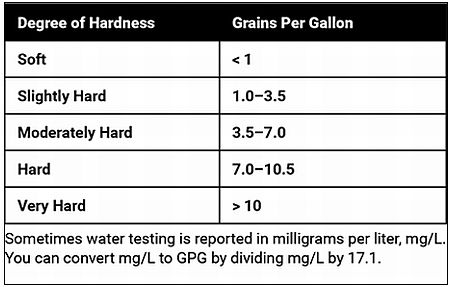
Consult the Consumer Confidence Report or Water Quality Report from your municipal water utility to determine the level of hardness in your water. You can also test your water. Hard water tests are relatively inexpensive and simple to use.
There is no reason to use a certified testing company unless you are testing for other contaminants. Some companies in the water treatment business will send you test strips for free.
Softening the Water
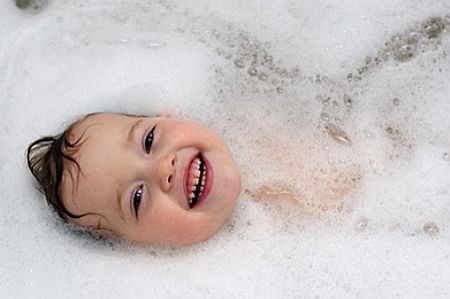
Water softeners remove the minerals from the water before the water circulates throughout your house. Here's the process in broad strokes: Incoming water flows into a tank containing a softening resin, which resemble plastic beads. The beads have a negative charge which attracts the positive ions in the minerals. This causes the minerals to attach themselves to the beads. Eventually, the beads cannot hold additional minerals and must be regenerated. Next to the tank holding the beads is a tank containing a salt brine. The brine flows over the beads, removing the minerals and flushing them into a drain. The beads are ready to start the softening process again.
The regenerating process is automatic. Some softeners use a timer to regenerate the resin, but other models use sensors to determine when regeneration should take place.
Water softeners come in a variety of sizes. To match the softener to your needs, multiply the number of people in the house by 75 gallons per day by the water hardness number you determined from testing. For example, four people × 75 gallons per day × 8 (as an example of water hardness) = 2,400 grains per day.

A water treatment professional can help you match the system to your needs, but the sample equation is a good place to start.
About Fran Donegan
Want to estimate your home improvement costs before talking with a contractor? Claim your home for free with bluehammer to estimate costs, secure your home inventory and learn more about your home.
* THIS REPORT IS AN OPINION THAT MAY BE INACCURATE AND IS PROVIDED SOLELY AS AN INFORMATIONAL TOOL NOT DESIGNED TO PROVIDE DEFINITIVE ANSWERS. ALL ELEMENTS ARE OFFERED "AS IS" AND BLUEBOOK EXPRESSLY DISCLAIM ANY AND ALL WARRANTIES, REPRESENTATIONS, AND GUARANTEES OF ANY NATURE, EXPRESS, IMPLIED OR OTHERWISE, INCLUDING BUT NOT LIMITED TO ANY IMPLIED WARRANTIES OF MERCHANTABLITILY, NONINFRINGEMENT, TITLE, QUIET ENJOYMENT, ACCURACY, OR FITNESS FOR A PARTICULAR PURPOSE. IN NO EVENT SHALL BLUEBOOK (OR THEIR SUPPLIERS) BE LIABLE FOR ANY GENERAL, DIRECT, SPECIAL, INCIDENTAL, INDIRECT OR CONSEQUENTIAL DAMAGES OF ANY KIND, OR ANY DAMAGES WHATSOEVER (INCLUDING WITHOUT LIMITATION, THOSE RESULTING FROM USE OF THE PRODUCT, INCLUDING : (1) RELIANCE ON THE MATERIALS PRESENTED, (2) COSTS OF REPLACEMENT GOODS, (3) LOSS OF USE, DATA OR PROFITS, (4) DELAYS OR BUSINESS INTERRUPTIONS, (5) AND ANY THEORY OF LIABILITY, ARISING OUT OF OR IN CONNECTION WITH THE USE OR PERFORMANCE OF INFORMATION) WHETHER OR NOT BLUEBOOK HAS BEEN ADVISED OF THE POSSIBILITY OF SUCH DAMAGES.